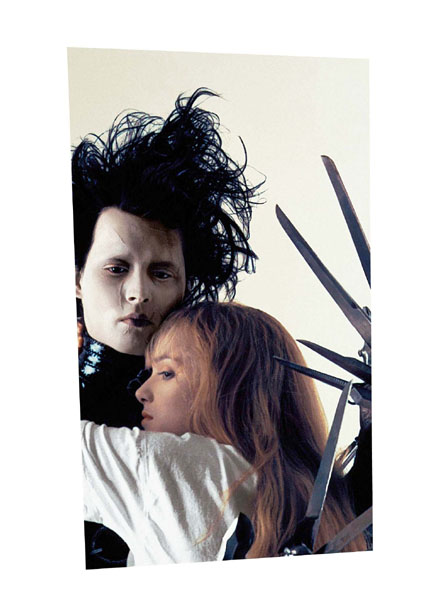
Who doesn't love talking farm animals? Okay, so maybe I know a few select people who will inevitably tell me these things terrified them to no end, but on the whole they have a lot going for them in the cuteness department. Funny little voices, cute scurrying movements, hilarious misunderstandings of real-life situations through their animal-brain lens. What's not to like?
Babe was one of those movies that could have been a triumph or a disaster, and it managed to come out as the former. Believe it or not, movie technology in 1995 was not quite everything it was today. Technological prowess aside, talking animals have a tendency to go one of two ways: overly cartoony and amusing to only those in the under-ten set, or heartwarmingly adorable in a way that makes you want to "awww" through the whole movie. Babe managed to pull it off, earning not only some well-deserved "awwws" but also some seriously positive critical acclaim.
The movie is an Australian film about a little pig who wants to be a sheepdog. Like most good family films, the premise is simple and uncluttered. Sure, there are some cute B-stories, but it's not an especially complicated plot. The straightforwardness of it appealed to parents and children, and the movie showcased classic themes and values with one corkscrew-tailed twist: a pig protagonist. I'm willing to bet a lot of kids forwent the BLTs at their post-film dinner trips. He was just so darn cute, it was hard not to see him there, waving feebly between the leafy greens and ripe tomatoes.
Ohhh my gosh, when that little Babe cries, "I want my m-o-o-o-om", I die a little inside from the incessant adorability. Could they have chosen a cuter protagonist? The correct answer is no, no they could not have. Babe is the best. He's not just cute and cuddly, he's also naive, strong-willed, stubborn, and determined. In short, he's a perfect entertainment for children because he's exactly like them. Parents were pretty keen on him too, most likely won over by this amazingly endearing version of Jingle Bells:
Babe was not, of course, the only featured farm animal in this film. The movie had a slew of barnyard pals to entertain and enthrall us. The movie begins with our cuddly future pork product is separated from his siblings by chance and selected to be in a booth at a county fair. Farmer Hoggett, the adorable Australian farmer who looks like a moderately more huggable version of pitchfork man in American Gothic, feels an immediate bond with Babe and correctly guesses his weight for the win. He brings home his new prize runt and allows him to nest with the sheepdogs, a cocky breed who clearly know themselves to be the farm favorites.
He is befriended by Maa, a maternal sheep, and Ferdinand, a misguided scheming duck. Ferdinand had been playing resident rooster, and was very upset at the introduction of the mechanical rooster--that is, alarm clock. He ventures with Babe on a covert mission to stop the dreaded mechanical rooster, resulting in mild antic-rousing and some downright messes. Meanwhile, the sheepdog matriarch Fly mourns the loss of her sold-off puppies, and Babe requests to call her Mom. Oh my gosh. The cuteness. The cuteness. I'll give you a minute.
Despite many pork-crazed visiting relatives, Mr. Hoggett inexplicably befriends Babe and protects him from uncertain dinner fate. Unfortunately, they go with duck a l'orange, incidentally the tender meat of Ferdinand's gal pal. Ferdinand peaces out at this point, determined not to become the next duck a l'orange. Babe encounters some men trying to steal some of the Hoggetts' sheep, and in watching the family sheepdogs gather up the herd is enthralled by the possibility of sheepdoghood.
Mr Hoggett takes notice of Babe's special interest, giving him the opportunity to give a go at herding. The sheepdogs warn him that sheep should be treated roughly, but after biting Maa his adorable guilt is just too much to bear. No, our pal Babe opts for asking them politely to please fall in line, to which they graciously comply. The other dogs are pretty pissed and a fight breaks out, leading to some seriuos barnyard drams.

Farmer Hoggett thinks about entering Babe in sheepdog trials, and everything seems to be going very well. Then of course, there is a series of events that are heartbreakingly sad and which I will intentionally omit not just for brevity's sake or spoiler consciousness, but because they make me a cry like an overgrown infant. I'll let you rent the movie or Netflix it or whatever newfangled thing you kids are doing these days to get ahold of classic films, but I'll spare you some of the sadder details. You're welcome.
Babe gets signed up for the sheepdog trials under the auspicious stage name "pig". Before his grand performance, he finds out that (gasp!) people just like his beloved Mr. Hoggett actually eat pigs. I know, I know. I'll give you some time to digest that. Not literally, though, I hope. Hoggett sings the 70s hit "If I had Words" to try to make it up to him. A small consolation, no doubt, but he goes for it. After some tense moments, Babe performs beautifully in the sheepdog trials, earning the praise and admiration of the crowd. And of course, he gets the ultimate show of affection from Mr. Hoggett himself, who tells him, "That'll do, pig. That'll do."
I leave you with the mice rendition of If I had Words, certain to make you smile or make your eardrums burst depending on your tolerance for helium-infused voice work.









